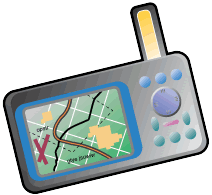 |
||||||||
| Issue Number 259 |
March
2001
|
|||||||
|
P.O. Box 189, Moffett Field, CA 94035-0189 |
||||||||
|
|
||||||||
 |
||||||||
| Issue Number 259 |
March
2001
|
|||||||
|
P.O. Box 189, Moffett Field, CA 94035-0189 |
||||||||
|
|
||||||||
Communication Issues from ASRS Reports
ASRS recently received a report from a concerned air traffic controller who describes a non-standard communication practice by pilots and controllers – the use of microphone clicks as a response to clearances (by pilots), or to readbacks (by controllers).

A substantial number of ASRS communications-related reports involve readback/hearback problems. Many of these incidents could be prevented if reporters followed prescribed radio contact techniques. Section 4-2-3 of the Aeronautical Information Manual (AIM), and section 2-4-3 of the Controllers Handbook (FAA Order 7110.65) cover correct radio communications phraseology and techniques for pilots and controllers, respectively. Neither reference endorses microphone clicks as an appropriate response technique.
Clearance "Red Flags"
In the following incident, an air carrier crew fell victim to a clearance misunderstanding, but realized after the event that they had missed several "red flags" that might have led them to question the clearance:
From F/A to PA
Those who enjoy aviation humor know that a number of airline jokes feature the bungled or embarrassing Passenger Announcement (PA). A variant is the cockpit call to the Flight Attendant (F/A) that becomes an unintended PA. More from this recent ASRS report:
"Ever Stop to Think, and Forget to Start Again?"
Bumper Sticker
It doesn’t get much better than this: there was a recent event involving human error, and you weren’t the hapless human involved. CALLBACK, a publication devoted to preventing human error, made a mistake.
In our January
2001 issue (#257), we published an article titled "Code A/ Alert"
that featured a report from a general aviation pilot who had filed
an IFR flight plan with the equipment notation Code /A. The pilot
requested radar vectors for a route short-cut. The Center controller
asked whether the aircraft was equipped with GPS, and the pilot replied
"VFR GPS." The pilot was then handed over to another Center
controller who rerouted him to a distant VOR fix. Here’s what
happened next, in the pilot’s words…
We said that the reporter had erred twice – in requesting a route short-cut using VFR-certified GPS on an IFR flight plan; and in accepting the Center controller’s reroute to the distant fix.
We were wrong on both counts, as we subsequently heard from many of you and the FAA sources we consulted:
(1) There is nothing in the FARs that prevents a pilot from requesting, or a controller from granting, a radar vector routing to any fix, as long as the pilot complies with altitude assignments and other FAR requirements. If ATC grants the request, the controller is responsible for radar monitoring until the pilot is able to proceed direct using the certified navigation equipment on board. In the incident reported to ASRS, the pilot’s aircraft was /A equipped, so the primary equipment capability was DME and Transponder with Mode C – as filed for the flight.
(2) The use of VFR GPS to "aid" navigation to a cleared fix is also not contrary to the FARs, if certain criteria are met. Our FAA Headquarters source explained it this way:
Suppose he [the ASRS reporter] had requested and been approved a clearance direct to XYZ and had used a VFR GPS to execute the clearance. Generally, the FARs are permissive, not restrictive, as long as the resulting operation does not reduce the original level of safety. Since the FAA has provided operational approval guidance on the use of VFR RNAV systems in Class A airspace under radar control (see Order 8400.10, Air Transportation Operations Inspectors Handbook, Volume 4, Paragraph 23C(3)(d), using VFR GPS in this case would probably be OK. Additionally, the Aeronautical Information Manual seems to provide similar guidance.
Our Headquarters source added that the FAA does not actively promote the use of VFR GPS to comply with IFR clearances, but has initiated a research project to determine the feasibility of this type of operation.
We thank our readers – pilots, controllers, university professors, and aviation consultants – who took the time to let us know our commentary was off base and offered their experience and knowledge as a resource. We are willing to make mistakes if someone else can learn from them.
Fueling Slip
A recent ASRS report from a Cessna-340 pilot provides an example of how fueling errors can not only cause serious incidents, but result in potentially costly engine damage.
A misfueling error may not be noticed during preflight unless a pilot opens the fuel cap to inspect the fuel color and smell. Supervising a refueling is the "first line of defense" against this type of problem.
| ASRS Recently Issued Alerts On... |
|---|
| A-300 engine failure during initial climb |
| B737-300 wire bundle damage from rotating flap torque |
| ARTS radar tracking problem in an East Coast TRACON |
| CL65 uncommanded thrust reverser deployment at cruise |
| Multiple reports of problems with a TRACON radar system |
|
|
|
|---|---|
|
Air
Carrier/Air Taxi Pilots
|
2,451
|
|
General Aviation Pilots
|
597
|
|
Controllers
|
76
|
|
Cabin/Mechanics/Military/Other
|
162
|
|
TOTAL
|
3,286
|